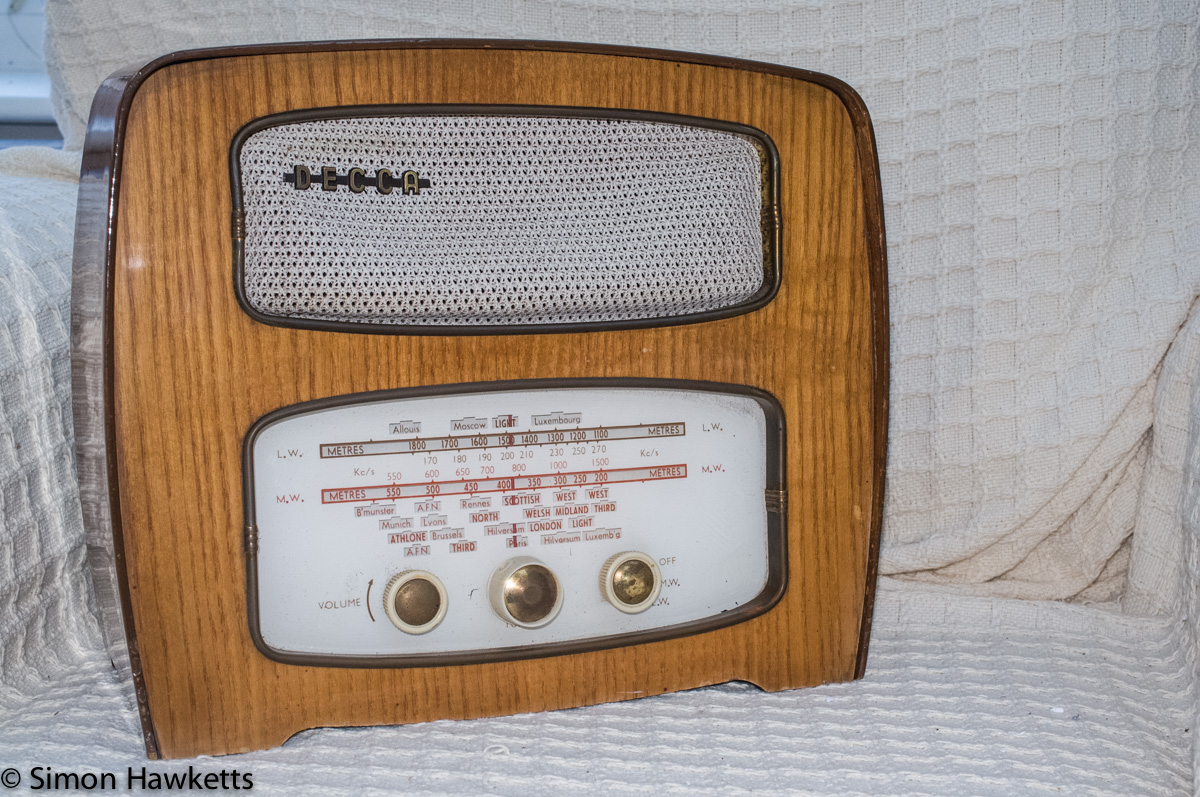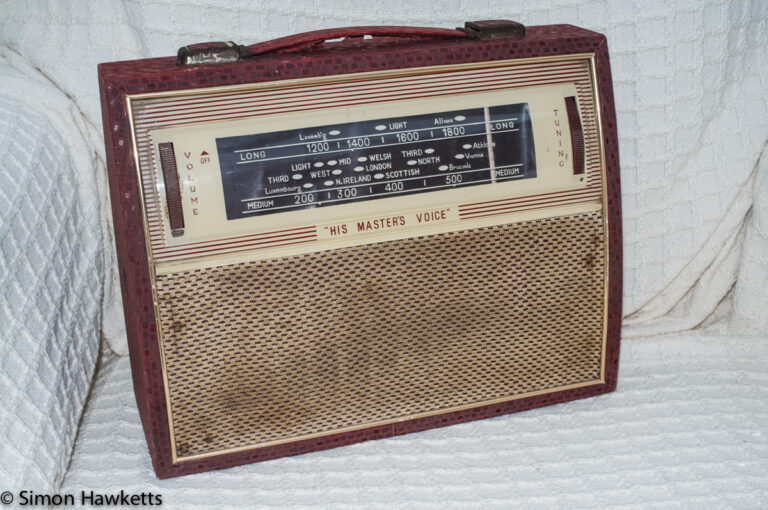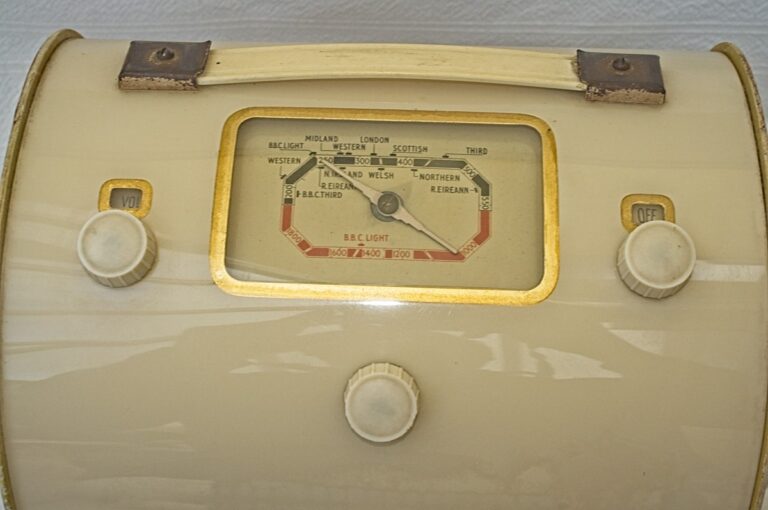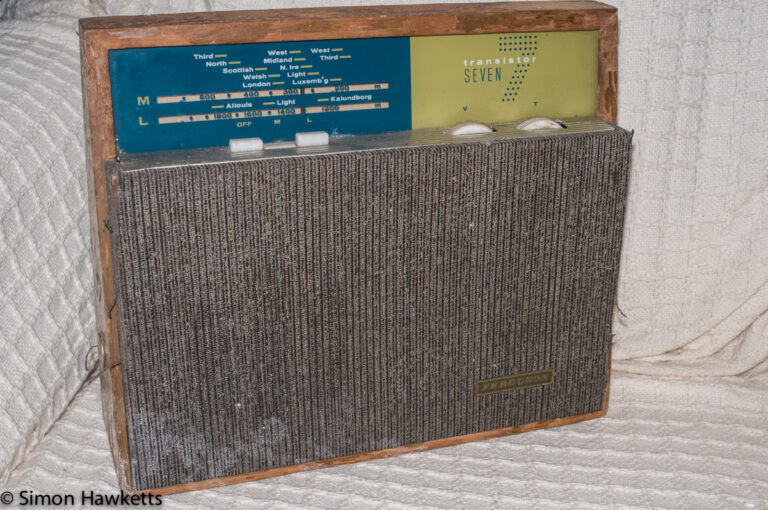The Beautiful Decca TT33 Desktop Radio
The Decca TT33 is a traditional looking, desktop radio set made in 1960 with two band coverage and a large glass tuning scale with all the popular stations of the day inscribed. It’s a six transistor set, run from two 6V batteries and would have looked very smart in a typical, post-war family household.
My Decca TT33 Desktop radio
I purchased my Decca TT33 from eBay as a ‘Buy it now’ sale. I saw the set on a routine trawl through the eBay site to see if anything interesting had turned up, but it was priced at £40 which I considered to be too much.
I put it in my watch list however because I think it’s a very attractive example of a post-war design. I could easily imagine it in our kitchen at home when I was a child with my Mum doing the housework with Worker’s Playtime, or Mrs Dale’s Diary playing away.
Fortunately, a couple of days after I put it on my watch list, the seller offered it for £25 which seemed much more reasonable, so I bought it.
I could see from the seller’s photos that the unit was in pretty good cosmetic condition, and this was confirmed when I received the radio a few days after placing the order. Considering the unit was made 63 years ago the set has been very well looked after. The case had kept it’s highly polished look, and the control knobs, although dirty, will only need a clean and a polish up with some Brasso to be as new.
Similarly, the trim around the speaker and tuning dial, which seems to be made of a bronze coloured metal, should also clean up. The speaker grill cloth is misshaped, but I suspect after being cleaned and flattened it should be fine.
Internally I can see that some capacitors look as if they have been replaced with more modern components, and a couple of the transistors have definitely been replaced because they are OC71s rather than the correct XC101 transistors. However, they don’t look as if they have just been done, so they could have been replaced in the 1970s or 1980s to repair the set. I’ll know more about that when I get it on the bench and powered up.
Decca TT33 Photos
The gallery below shows some pictures of the TT33.
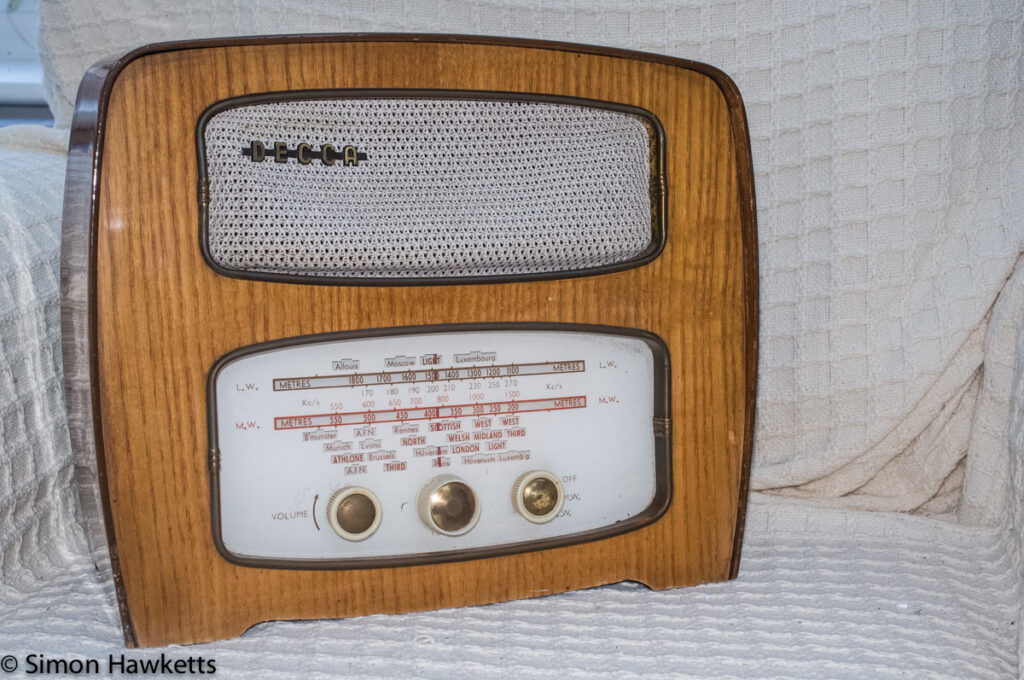
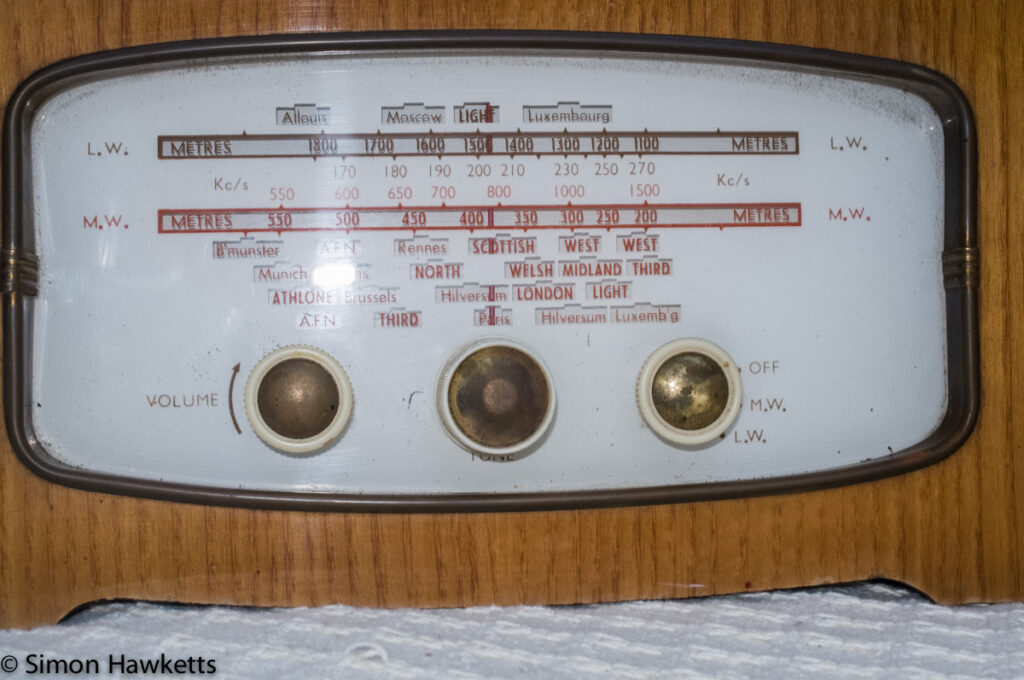
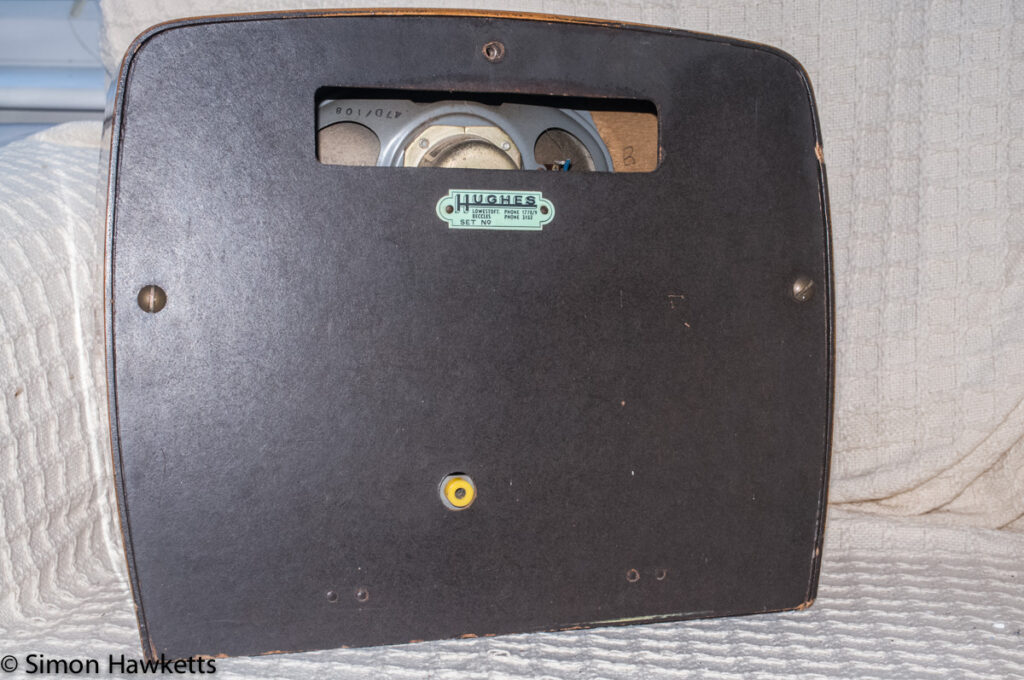
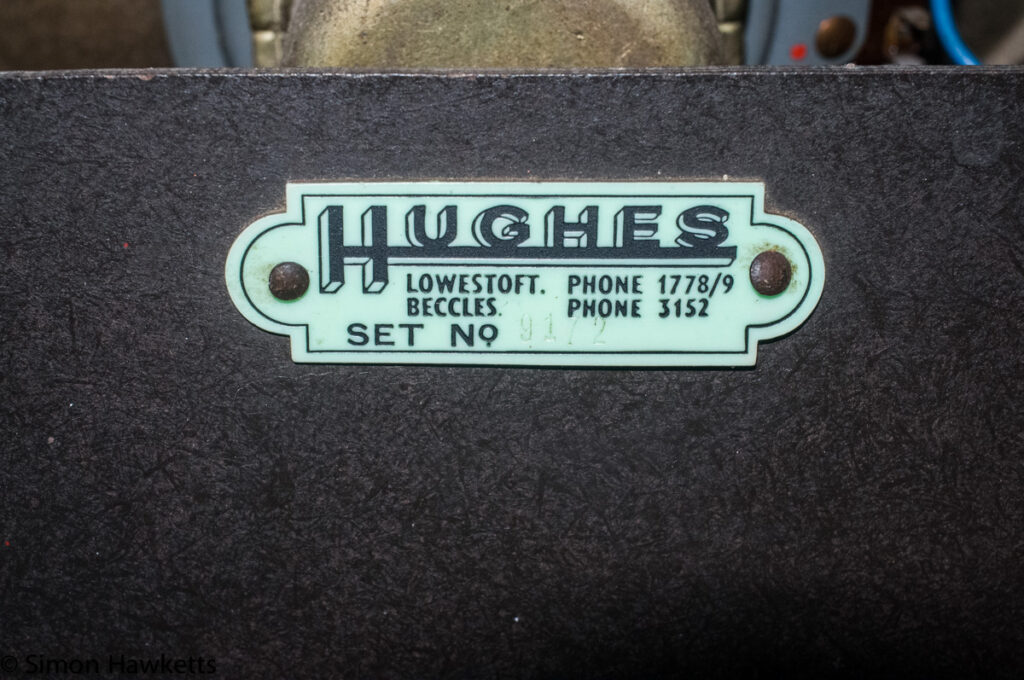
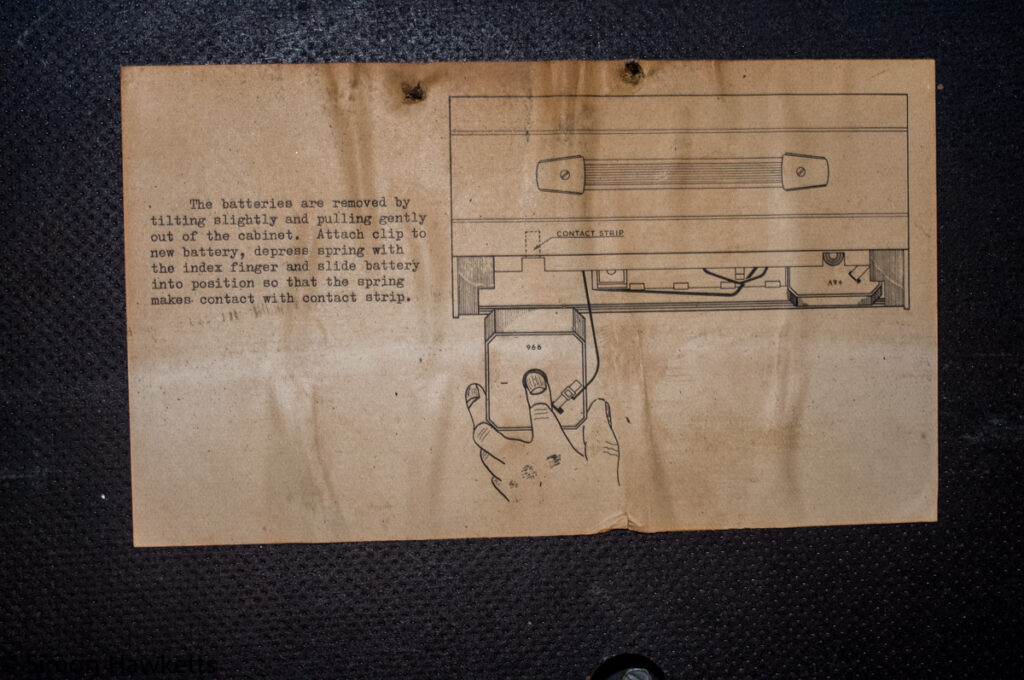
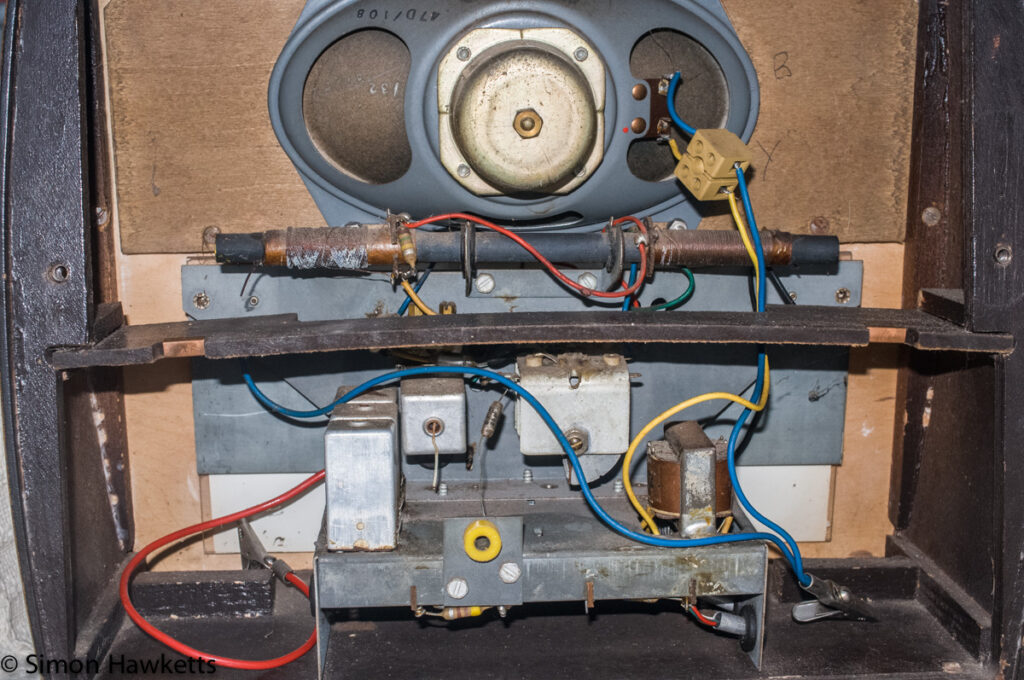
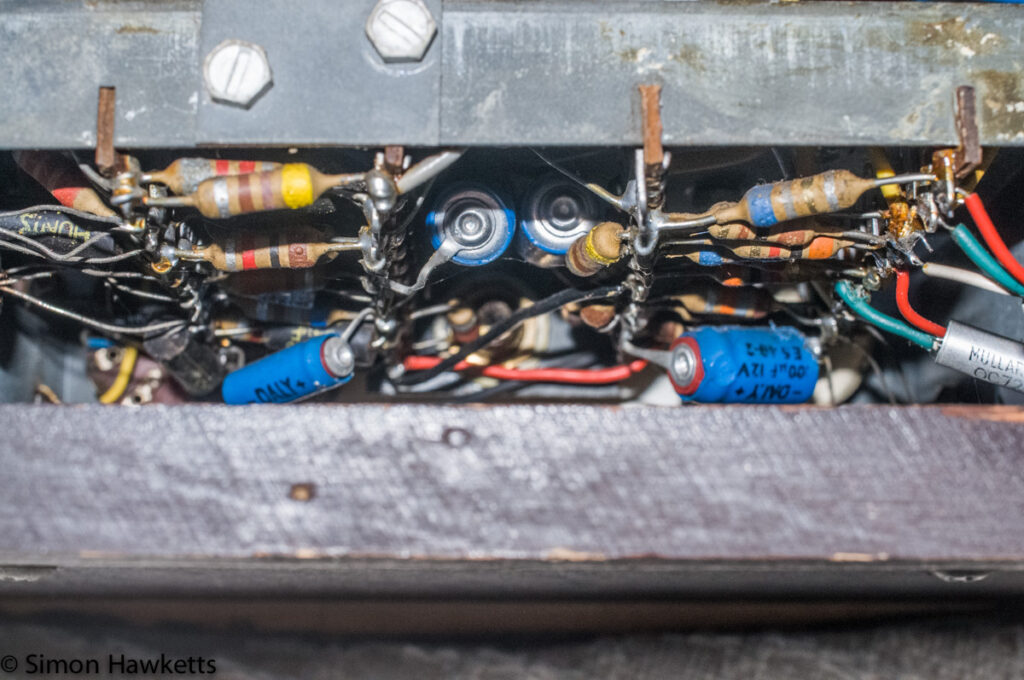
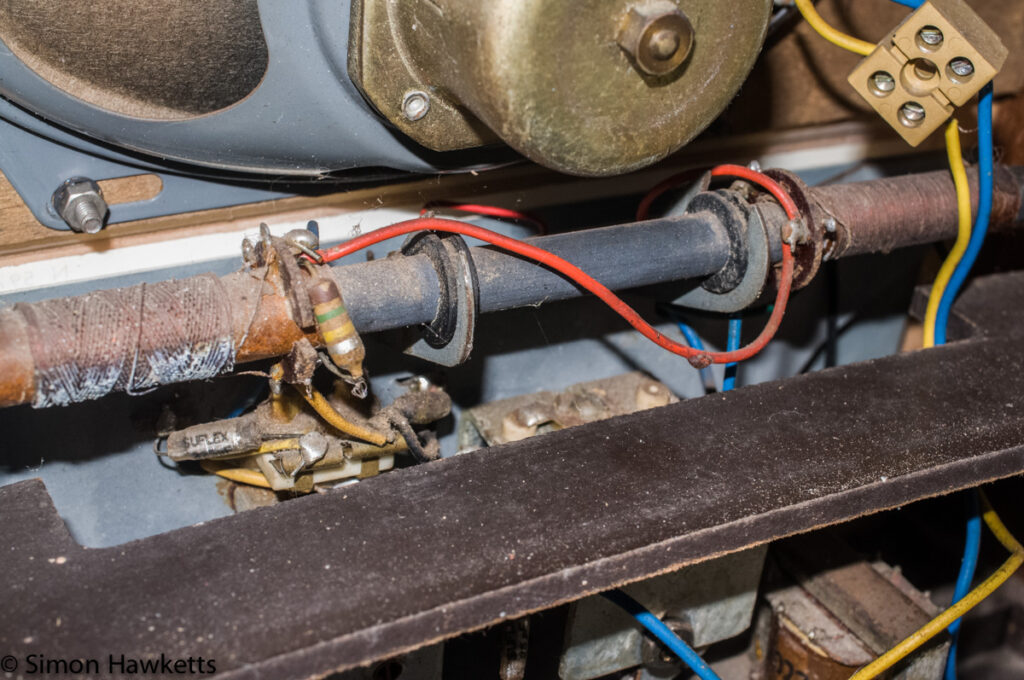
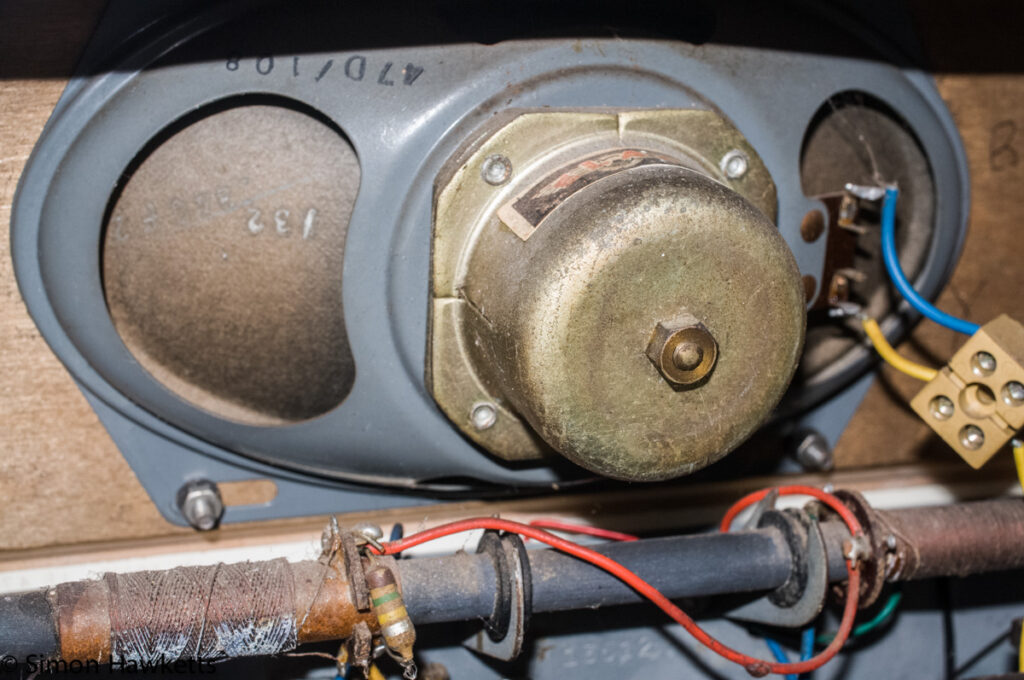
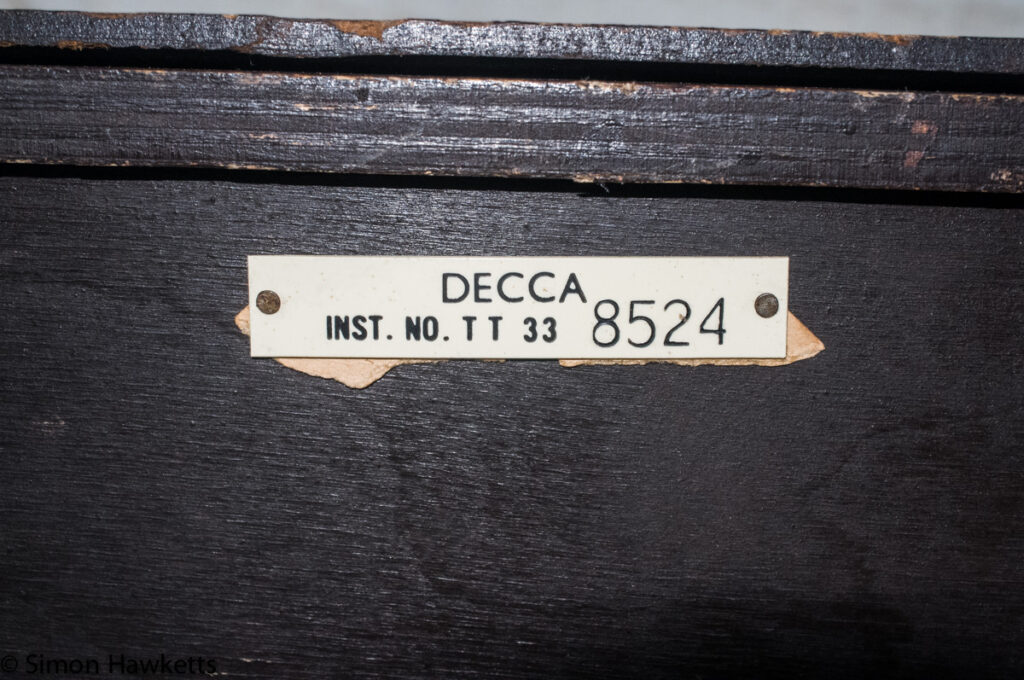
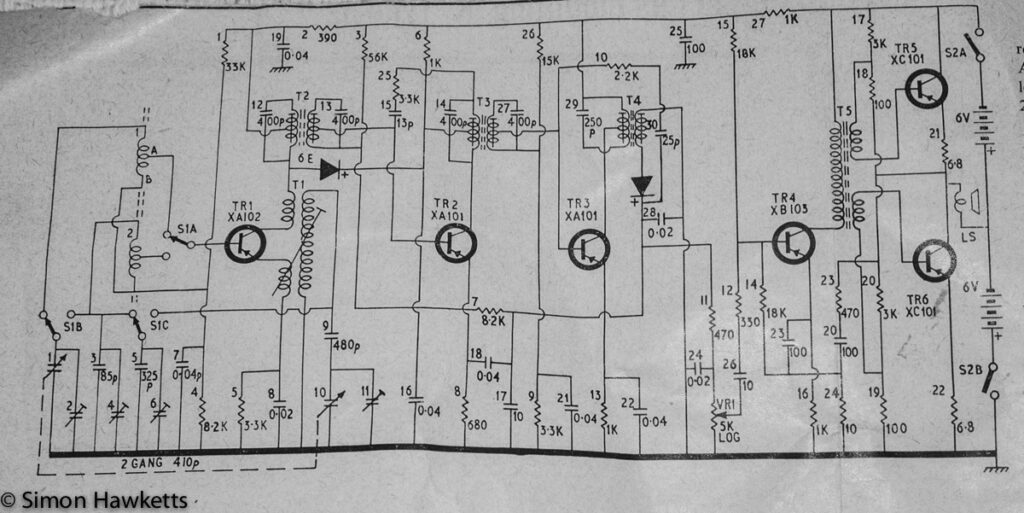
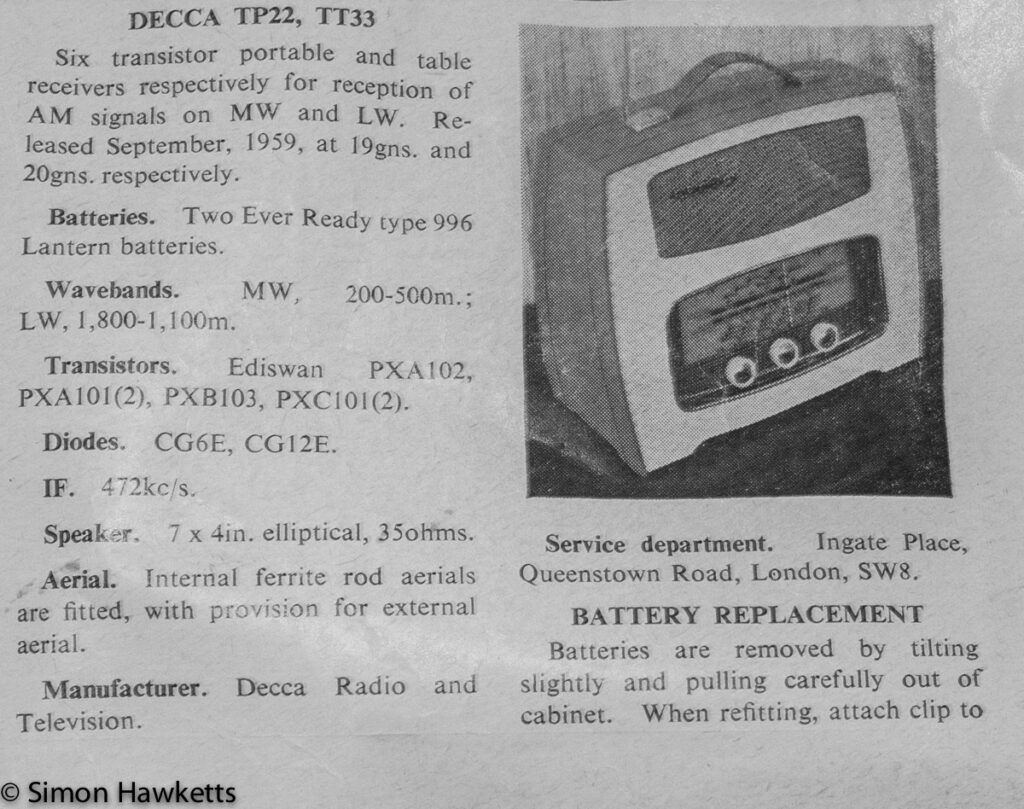
Decca TT33 Description
The TT33 is a six transistor, superhet design that receives broadcasts on the Medium wave and Long wave.
In an Internet search I found that the original sale price in 1960 would have been nearly £16, which would be the equivalent of about £470 in 2023. That makes this set quite an investment for a family budget, and although I remarked above that I could imagine the set in our Kitchen at home, I’m fairly sure the price would have excluded it from our typical working class house.
As I said above, the set is a desktop design, and since the case is quite big it allows space for two large 6v lantern batteries. The arrangement with the batteries, however is quite odd.
The batteries and held in compartments on either side of the metal chassis. Then there is a lead with a crocodile clip which attaches to one of the terminals on each battery, with the other battery terminal making contact with a copper strip fitted to the board that forms the top of the battery compartment.
The copper strips on either side are connected together and form the central connection of the two batteries in series. The two things I note here are that the centre connection is fed to the output stage transistors via the loudspeaker (which means this is more common than I thought – see my last vintage radio article), and the battery connections being made via copper strips would probably lead to power supply variations as the strips tarnished.
Operation of the Decca TT33 is controlled by three knobs on the front panel. The On switch on the right of the panel is also the waveband switch, so the user would turn the set on and select the waveband. Then, the volume control is on the left and finally the set is tuned with the slightly larger knob in the centre.
As the radio is tuned, a red indicator moves across the glass dial and shows the names of the stations inscribed at the frequency they transmitted on. These tuning arrangements were quite complex, with cord wrapped wound large drums, and I’m always surprised that they remain working in old sets. On this Decca TT33, the tuning has quite a low gearing, so you have to turn the knob many times to move from one end of the band to the other. I guess this means there was more fine tuning to get the station frequency absolutely correct however.
Decca TT33 Servicing information
The set I purchased came with a small piece of paper which had the circuit diagram and a short description of the Decca TT33 (which is included in the photos above), but I found the 1960/61 volume of Radio & TV servicing on page 68 also has the full description which I’ve included here. 1
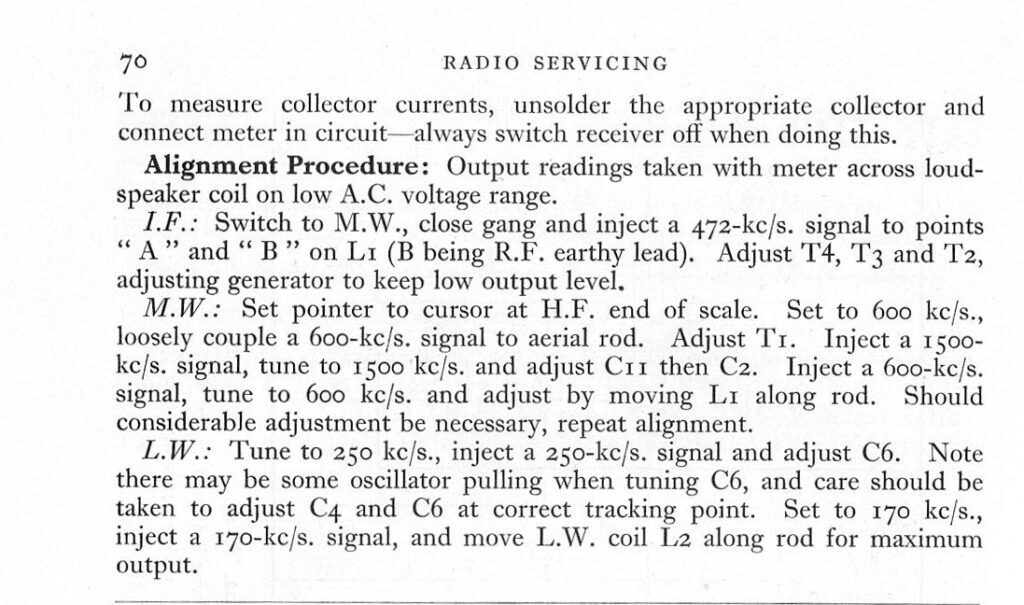

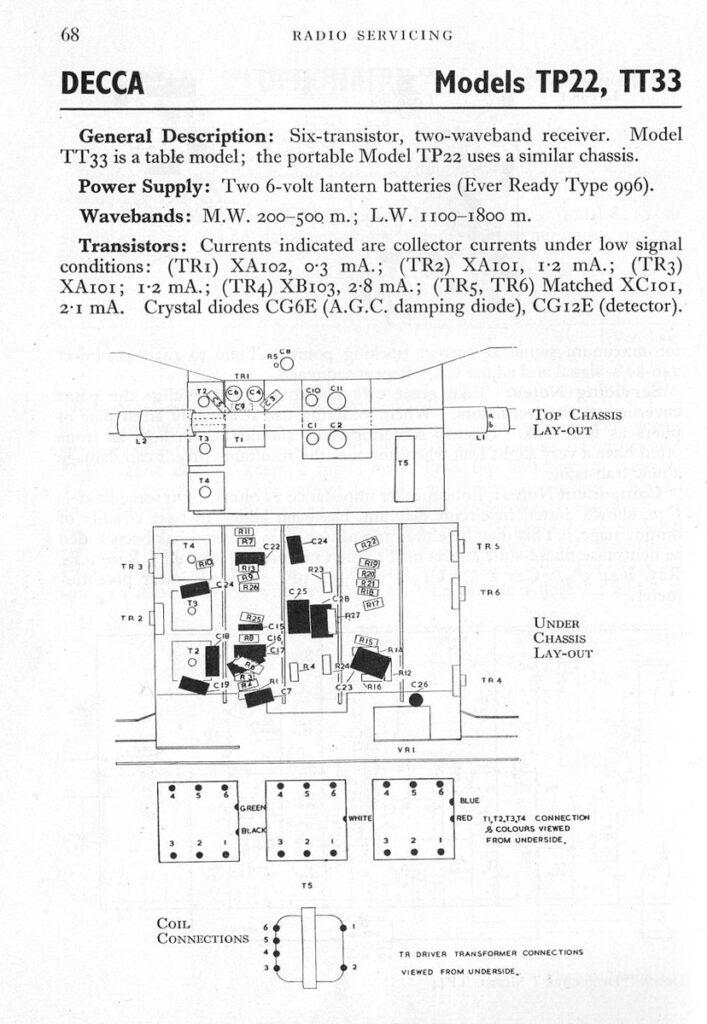
- the normal caveat applies that I believe there is no breach of copyright in displaying his data, but if it turns out that this is copyrighted then I will of course remove these images. [↩]
Discover more from Everything Vintage
Subscribe to get the latest posts sent to your email.

